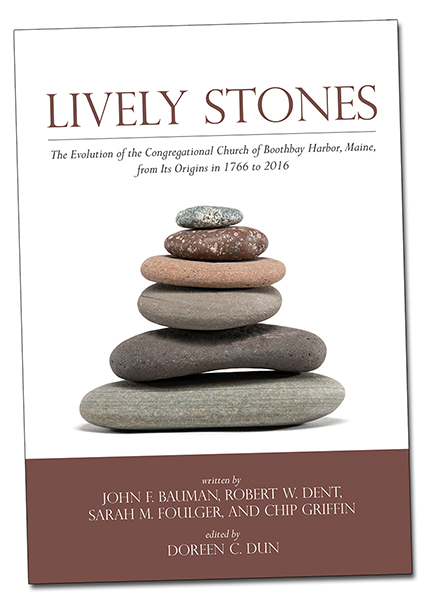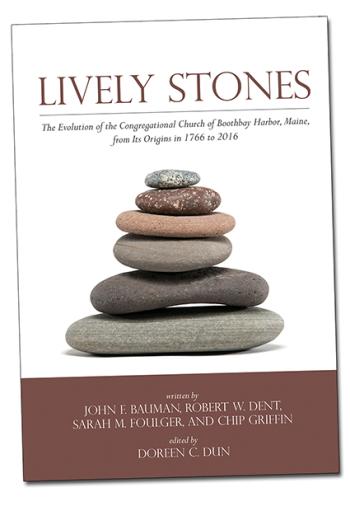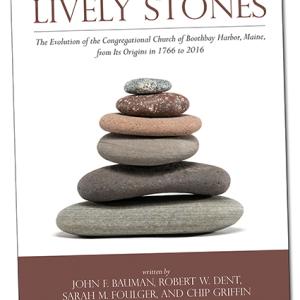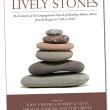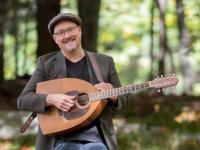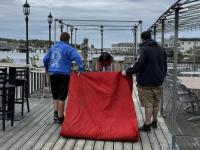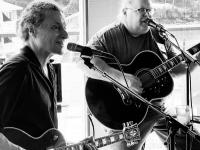The Congregational Church charting its course into the early twentieth century, 1892-1919
This is the seventh of twelve monthly articles celebrating our region’s first church from 1766 to 2016. "Lively Stones" is co-authored by Chip Griffin, Sarah Foulger, Bob Dent and Jack Bauman. "Lively Stones" is the first history book of our Boothbay region community from its founding in over a century and is available at Sherman’s, the church office, online, and in the Boothbay Harbor and Southport libraries.
By Robert W. Dent
The period from 1892 to 1919 was an era of major change. Transportation and industry were revolutionized. Cars were just being invented at the beginning of the period and the Wright brothers’ first successful biplane flight was in 1900. By 1919, the sight of cars and planes moved from “unheard of” to “not that rare” in Boothbay. In 1892, as citizens still felt the impact of Civil War, the issues of World War I loomed large.
By the 1890’s, having navigated through numerous turbulent times, the Congregational Church had a rich heritage. Staying on the cutting edge of modern progress, the church had added an organ and incorporated electric lights and modern heating. Benefiting from Boothbay’s growing tourist industry, it had a respected choir but also frequently augmented its music program with noted guest musical artists.
“To chart a course” has been defined as “To plan a direction of travel by using a chart and taking into consideration all the variables such as the speed of the boat, wind velocity, etc.” Clearly between 1892 and 1919, a time of rising parochialism and turning inward, there was the need to chart a course. Apparently, a few Boothbay area residents during this period joined the Ku Klux Klan and held biases against Catholics, Jews, and blacks. On the whole, however, Boothbay charted a much more productive course amidst such prejudices. The Congregational Church, along with other churches in the community, lent support to the rejection of isolationism.
Religious diversity was growing. During this era, the Episcopal Church arrived in Boothbay when, on September 29, 1906, All Saints By-the-Sea was consecrated. By 1914, the Catholic Church was under construction. The Congregational and Methodist churches were driving forces in the local spiritual and cultural scene.
Among the ministers of this era was the Rev. Donald McCormick. Like John Murray, he was Scotch-Irish. He served churches in England, Canada, and Waterford, Maine. Seeking a better education for his children, from Waterford, he moved to Boothbay. Serving for 8 years as pastor he died suddenly on November 21, 1902. His was the longest pastorate at the Congregational church of Boothbay in many years. Of McCormick, Francis Green wrote, “His life was a continual benediction. He loved his church, the town and its people, and his death was the cause of universal mourning in the community. ”
Two of his children, Austin and William, played prominent roles in the Boothbay community in the years after their father’s death. William became very active in the leadership of the YMCA. Austin attended Bowdoin College and was a frequent speaker at the Congregational Church for events related to youth and mission.
Between 1893 and 1919, other outstanding pastors included Rev. Frank B. Hyde, Rev. George Hull, and the Rev. Stanley Post. An active laity helped with the upkeep and improvement of the church and parsonage, enhanced organizational structure, and maintained a vital music program, an active women’s group, and a vital youth program. Visiting ministers of great renown had a major impact. Nurture and mission were key compasses helping to chart the course.
Being located in a tourist community, numerous retired or vacationing pastors supplied the pulpit. Not least among the supply pastors was the Rev. Dr. Harry Emerson Fosdick. By 1915, Fosdick had become a professor at Union Theological Seminary in New York. As World War I began to unfold, Fosdick was convinced that the nation could not wallow in isolationism but needed to become a part of the new internationalism. He saw the challenge as “winning both the war and the peace – a war to win all wars after which all people would learn to handle the new relationships for fraternity and not for war.” Toward the end of the war, Fosdick re-evaluated his position as a result of a trip to Europe where he interviewed the troops coming back from the front lines. By the end of the war, Fosdick believed that “if Christianity didn’t end war, war would end Christianity.”
How well the church charted its course is reflected in an article published on January 21, 1917, by the editor of The Boothbay Register: “The (Congregational) church’s aim is to make its life a practical expression of the religious ideal interpreted in the terms of everyday life, to relate itself to the community and wider interests and to make its influence felt during the seven days of the week.” Amidst all the radical changes of industrialization, theological tremors, the horrors of war, disruption in community life, changing social patterns and the stresses of significant changes in family life, the church continued to be a beacon of light in the community.
Event Date
Address
United States

